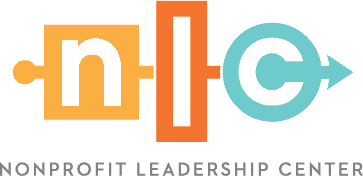The more you listen to and hear from the communities your nonprofit serves, the better equipped your organization will be to provide the resources it needs to build the community it wants and needs.
Nestor Ortiz, a Nonprofit Leadership Center mentor and the CEO of 16 Point Compass Consulting, says it’s essential for communities to have ownership in solving their problems because it creates change in ways and spaces that consider the nuance and culture of each community.
"It's essential for communities to have ownership in solving their problems because it "creates change in ways and spaces that consider the nuance and culture of each community."
Nestor Ortiz, CEO, 16 Point Compass Consulting
Use Nestor’s five steps to involve a community in identifying and solving its own problems:
1. Engage the community you are trying to help.
Community engagement is an intentional and purposeful act that relies on nonprofits and organizations to provide infrastructure so communities can inform and lead necessary change.
Helping a community identify and solve its own problems requires a genuine commitment by a nonprofit to understanding those needs and ensuring your mission aligns with them. To effectively engage your community, follow these three steps:
- Conduct research. Every community is different. Research the needs of the community you are trying to help to better hear and understand them.
- Attend meetings. Lots of them! Establishing your organization’s presence at community meetings, such as community councils, PTA meetings, and homeowner association meetings, lets the community know you value their opinion and are present in their lives.
- Map the community. Create a “lay of the land” to help your nonprofit and future stakeholders identify the community organizations, businesses, employment opportunities, educational institutions, and assets that positively and negatively impact the community.
2. Create transparency and trust.
When a community understands what’s happening within an organization, it doesn’t have to question when or how you will provide support. Ensure your nonprofit is an invested community member by supporting businesses, talking to residents, and attending various community functions. Keep a consistent level of engagement where the community sees you and knows your organization’s name — and you know the names of community members.
Be transparent and open about the process involved in solving current issues. Provide a public record of the organizers, sponsors, outcomes, and range of views and ideas gathered from your research.
Establish transparency and trust by identifying the following stakeholders in the community:
- Connecter: A person who knows many people in the community and can connect you and your organization to other stakeholders
- Doer: Someone who can execute on day-to-day tasks and responsibilities
- Sharer: Has networks and knows how to best disseminate information to the rest of the community
- Speaker: Someone able to articulate clear and concise messaging
- Organizer: A person who knows how to plan and organize events and is crucial to recruiting community members
Note: A single community member may hold multiple stakeholder roles.
3. Inform the community of your discoveries.
To help a community build toward the outcomes it wants, nonprofits must provide guidance, expertise, support and the capacity to succeed. Provide balanced and objective information that the public should know and act on. Inform the community about what you’ve discovered through infographics, social media, emails and phone calls.
4. Collaborate with a shared purpose.
A shared purpose between a community and a nonprofit cements the collective desire to work together to address and solve pressing challenges.
Collaborate with the community you are trying to help through group meetings, online communities and study circles. Be open to hearing others’ voices, even if your research data tells you something different.
Through careful planning and preparation, your community stakeholders should lead the charge in partnership with your organization. The process should clearly define your shared purpose and participants’ needs. That may involve activities such as:
- Crowdsourcing ideas
- Visioning what success looks like
- Scenario-testing and mind-mapping budgets
- Discussing where opportunities lie within the community
5. Empower a participatory culture and sustained engagement.
Encouraging a community to identify its challenges and solutions may look different than what you and your nonprofit initially envisioned. That is OK. When you empower a community, you give them the ownership that allows for increased engagement and overall long-term sustainability.
Working together will allow your organization and the community to go much farther while saving time, resources and effort. Regularly consult the community through polls, surveys, interviews, and social media listening to continually gauge and improve the success of building toward the outcomes they want to see.
Lastly, ensure that each participatory effort has the potential to make a difference or positive impact and that participants are aware of that potential. Consistency is key!


